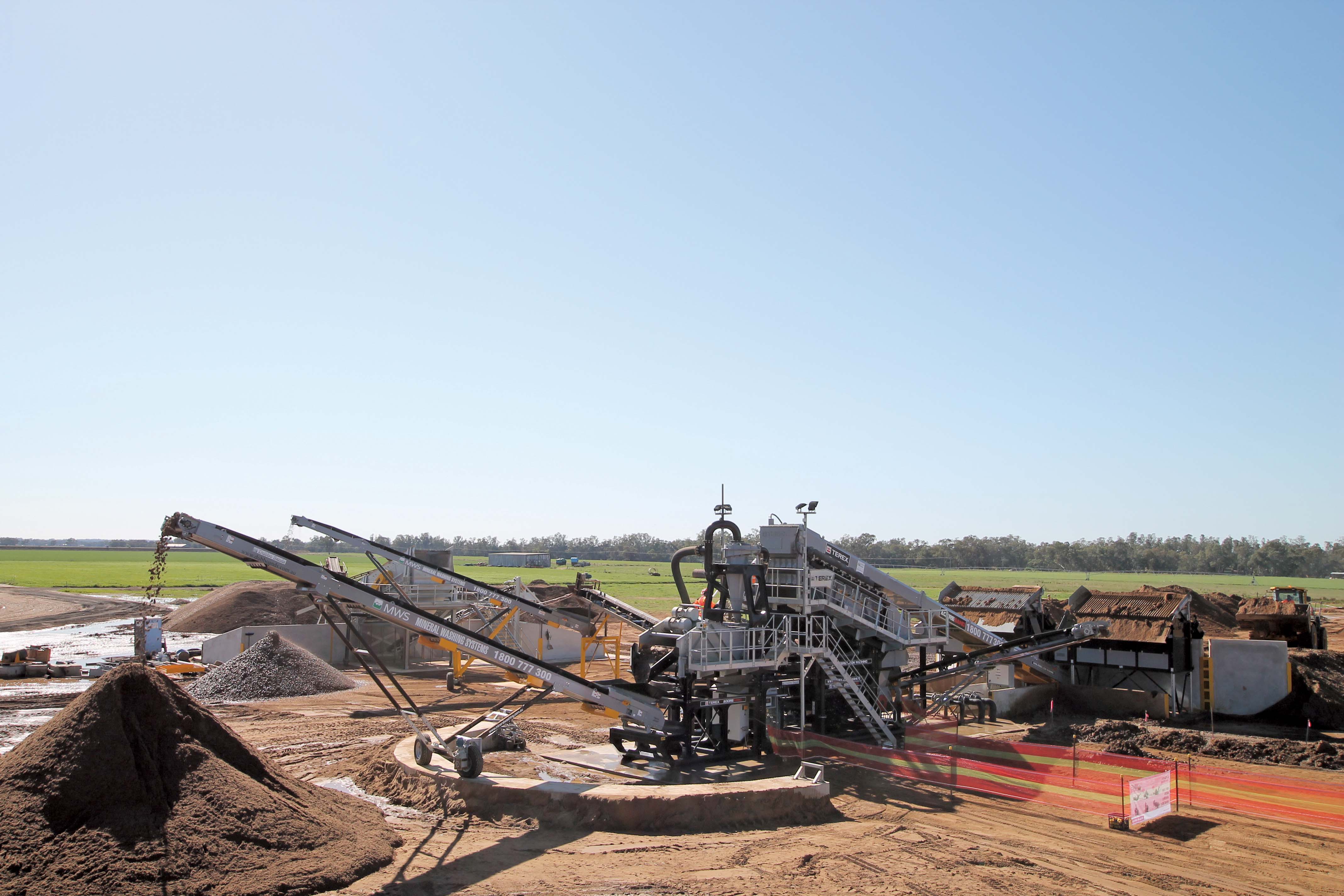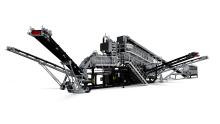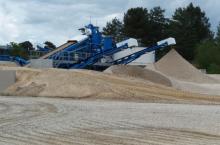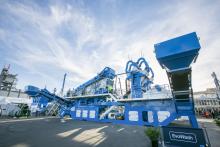
As the demand for washing equipment increases worldwide, manufacturers are responding with
new initiatives and new products, writes Patrick Smith.
For example,
And
Sean Loughran, director of TWS, says: “Fracking is already a major activity in the US and it is starting to become a global frenzy which presents an exciting opportunity for TWS with our new product currently in development.”
Meanwhile, the company’s distributor in Eastern Australia, Mineral Washing Systems (MWS) recently installed the first AggreSand wash plant in the Australian market at the Dubbo Sands Quarry, New South Wales(NSW), a privately owned and operated business formed by owners Mardi and GrahamColbran in 2003.
A leading producer of sand and gravel serving central west NSW, it offers a range of washed products including all-in sand, coarse sand, fine sand and river stone, in many sizes.
TWS and MWS, along with the customer Dubbo Sands, worked to devise a solution to meet the site specific needs, and after careful analysis of the feed material it was identified that a portion of the Dubbo Sands’ feed contained high levels of silt, which demanded a system that would deal with this in one pass.
MWS proposed the TWS AggreSand 165, with a three-deck aggregate screen and a single sand plant. It also provides a fully integrated feeding, screening and sand washing solution on one modular chassis, says TWS.
Dubbo Sands wanted the ability to blend varying feed materials from its site and so a dual feeder system was proposed. The feeders have a 12m³ capacity and were configured so that the two grades of feed material can be blended at different rates before being conveyed to the wash plant.
Blended feed material is delivered to the 16x5 screen by a heavy-duty inclined feed conveyor fitted with a 1,000mm belt. At the head of the conveyor an integrated wash box gives the material a presoak to precondition it before going on to the screen.
The system’s top deck acts as a protection deck while the top and bottom deck materials are stockpiled by the AggreSand’s integrated 9m stockpiling conveyors, which each have a stockpiling capacity of 150m³.
The prewash system is one of the first of its kind in Australia. The polyurethane in the bottom deck of the aggregate screen is split 1/3 -2/3 sections with 1mm and 4mm polyurethane modules respectively. The catchbox under the screen is specially designed to capture and separate the two grades of sand (0-1mm and 0-4mm). The fine materialwhich passes through the 1mm section of the screen is safely collected and piped to the prewash conical sump tank, designed to initially float off any light material (silt) with the heavier material dropping to the bottom of the sloped wall tank. The sump also enables the with varying levels of silt due to discharge regulator which ensures a constant underflow density,” says TWS.
“This ability to deal with varying silt levels was Dubbo Sands number one specification for the entire plant. The adjustable air bleed-off valve enables vacuum control which affects the moisture content underflow material.
“The overflow material is directed towards the Dubbo Sands water management system while the underflow is piped to the AggreSand’s sand plant.”
A dewatering screen is producing sand below 12% moisture, which eliminates the need for stockpile drainage, and this is described as a windfall for Dubbo Sands as demand is high for this quality concrete sand, which is instantly saleable and can be loaded onto a truck from the stockpiler belt. In addition the plant is producing two washed aggregates from a 200tonnes/hour feed.
Looking at the development of the CDE Global project portfolio in Saudi Arabia, UAE, Kuwait, Jordan, Bahrain, Qatar and Oman, the company has appointed Ruchin Garg as business development manager for The Gulf to oversee this operation.
He joins the CDE team having previously been involved in the development of the
footprint which has grown significantly in recent years,” says Iain Walker, CDE regional manager for Middle East and Africa.
CDE says it is also seeing a growing demand for the water recycling systems its offers, which allow operators to minimise the volumes of fresh water required to feed the washing plants.
“Almost all of the projects that we sell in The Gulf include some form of water treatment and recycling system. Our AquaCycle thickener allows our customers to benefit from the superior classification performance that washing systems offer while delivering 90% water recycling. In some instances if the AquaCycle thickener system was not available then a washing plant would simply not be possible,” says Walker.
Two such projects were completed for Abdullah Abdein in Saudi Arabia and Associated Construction Company (ASCO) in Kuwait.
The Abdullah Abdein project involved the supply of a EvoWash sand washing plant and AquaCycle thickener which accepts a combination of sand and gravel, crushed limestone and gabbro to produce a washed sand for use in concrete block making and a ready-mixed concrete batching plant.
CDE says the ability to accept the variety of feed materials was crucial to the success of this project as the dune sand was too fine on its own and needed to be blended with the limestone and gabbro material to produce the specification of sand required to ensure efficient concrete production.
ASCO in Kuwait bought the M2500 mobile washing plant and AquaCycle thickener in response to a surge in demand for concrete sand in Kuwait. ASCO was seeking to differentiate themselves from the other suppliers to concrete manufacturers by producing a washed sand with excess minus 63micron material efficiently removed. This allowed concrete manufacturers to reduce cement consumption in their concrete manufacturing processes which reduced the overall cost of production.
The company also offers a range of Sirocco air classification systems which can be specified whenever no water is available and a number of projects have been completed in Saudi Arabia in recent years.










